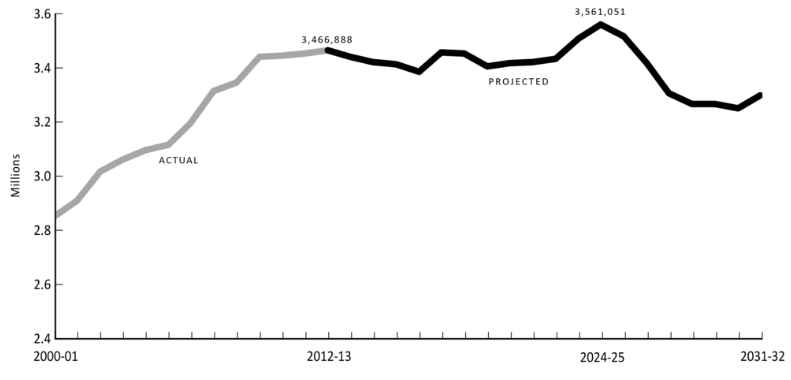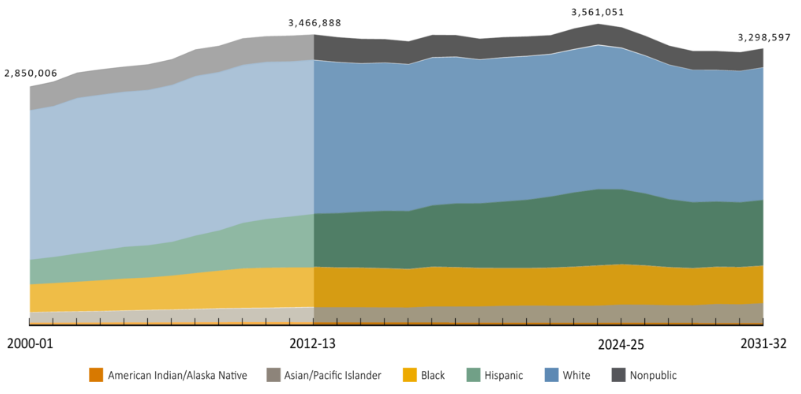After decades of growth and few years of decline, the nation is facing a decade of stagnating growth in high school graduates, according to a new report by the Western Interstate Commission for Higher Education (WICHE). The report, the latest update to its seminal study, “Knocking on the College Door”, projects high school graduates nationwide through 2032. While Utah mirrors many of the national trends, there are also some stark differences.
Stagnated Growth in Graduates
For the first time in decades, the country actually will produce 81,000 fewer graduates—2.3% less—in 2017. This number is expected to remain at a steady plateau for most of the next decade with 7 of the 10 years from 2013 to 2023 expected to see fewer or about the same number of graduates compared to 2011–12. While the country is projected to see three years of growth between 2024 and 2026, this will be a short- term increase as the average size of graduating classes between 2027 and 2032 is expected to be smaller than those in 2013.
While the U.S. high school graduation numbers stagnate, the number of Utah high school graduates is projected to increase by 37.4% over a 15-year period (2011-12 to 2025-26) – the second highest state behind North Dakota at 66.6% (whose K-12 student population is less than 25% of Utah). Idaho and Wyoming are the next behind Utah at 31.1% and 24.4% respectively.
The high school graduate projections mirror USHE’s long-term enrollment projections, that estimate Utah’s public colleges and universities will add over 52,000 new students by 2025-26 – the equivalent of the student bodies of Weber State University, Southern Utah University, Snow College, and Dixie State University combined in 2015-16.
Racial/ethnic Mix of High School Graduates
The racial/ethnic mix of high school graduates in the United States will continue to shift significantly toward a more diverse population of graduates fueled primarily by large increases in the number of Hispanic (50%) and Asian/Pacific Islander (30%) public high school graduates through about 2025. The pending national plateau is largely fueled by a decline in the White student population and counterbalanced by growth in the number of non-White public school graduates – Hispanics and Asian/ Pacific Islanders in particular. Overall, there will be consistent declines in the number of White public high school graduates and robust growth in the number of public high school graduates of color (or, technically speaking, “non-White” graduates) in the coming years.
Nationally, any projected overall growth in students graduating from high school is primarily due to the increases in non-White student ethnicities. In Utah the number of Hispanic public high school graduates are expected to grow 99% between 2011-12 and 2025-26. Compared with the White student population projected to increase 34%.
This coming decade, as universities and colleges across the country grapple with sagging enrollments, Utah’s situation will be the opposite. Universities and colleges will need to continue its focus on efficiency and cost-effectiveness to accommodate more students on Utah’s campuses. Continuing growth in higher education is the fuel that will help maintain Utah’s talent pipeline needed to keep pace with its fast expanding economy.


